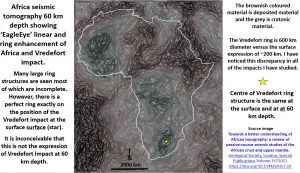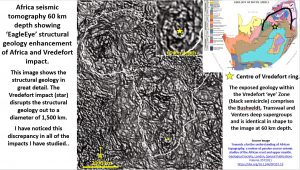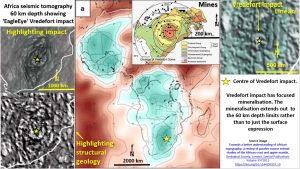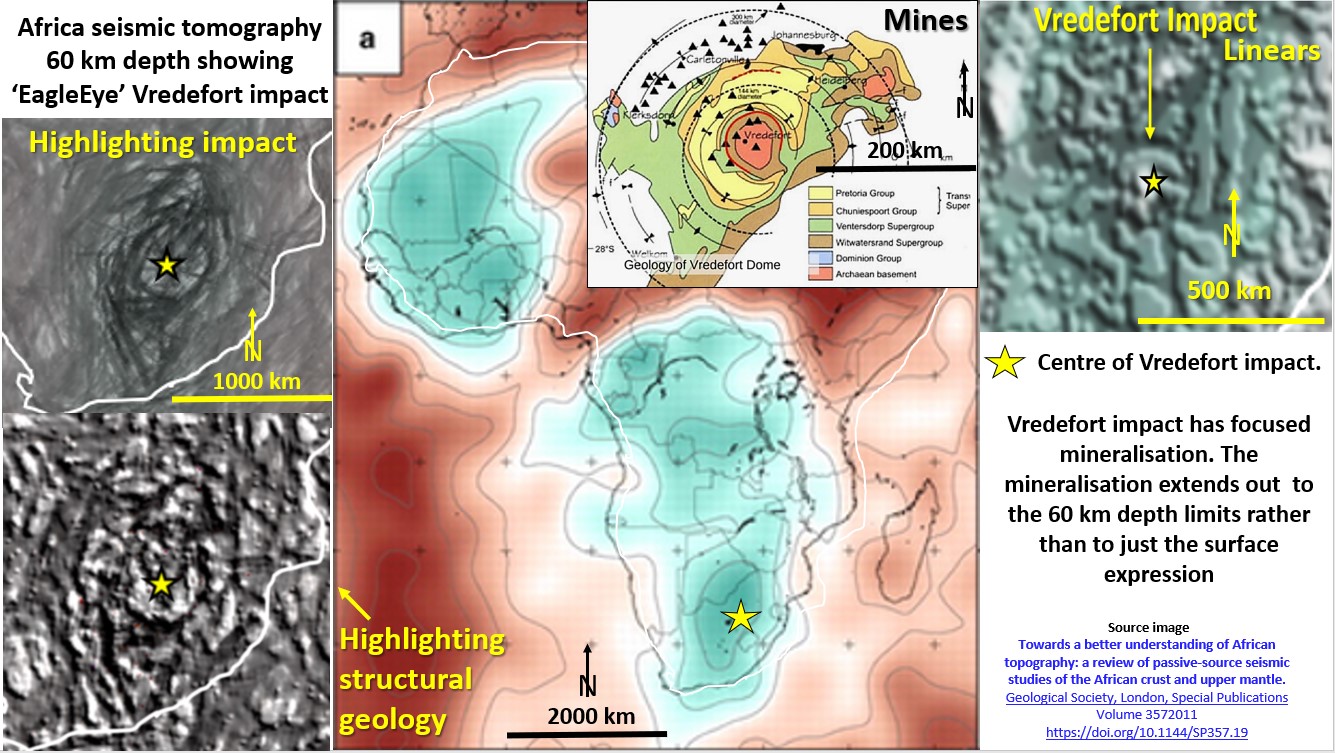Vredefort Impact, Africa – peer review of Watchorn ‘EagleEye’ Impact Structures.
Following my well attended, and generally well appreciated, AusIMM webinar on North America there were many comments from those attending. There were ‘excellent’ ‘thought provoking’ ‘paradigm challenging’ ‘you’re a brave man’ type comments which are all very well but not very constructive. However there was one constructive comment along the lines of ‘appreciated the talk … your EagleEye enhancement methodology is opaque …… not sure if your ring and impact structures represent real structures ….. you need to get them verified by a credible peer review‘.
The best ‘credible peer review’ that I can organise is to post examples of my EagleEye enhancement of credible well known impact structures on my website (up to 2,500 hits on individual posts) and on LinkedIn (up to 7,700 hits on posts).
I will start with Vredefort, Chicxulub, Sudbury, Araguainha, Shoemaker, Woodleigh, Yarrabubba and Acraman Impacts. These are well documented and well qualified peers (preferably geophysicists with a good knowledge of impact structures) can compare my structures with the known structures and comment on their veracity. That will be a good start for this peer review.
If any brave individuals – with a good, deep knowledge of these topics – wants to do an OFFICIAL PEER REVIEW then I will be delighted to cooperate.
This first post is on the South African Vredefort impact near Johannesburg.

This image of enhanced seismic tomography at 60 km depth highlights linear and ring structures, but not the detailed structural geology. The standout ring structure is in the exact position of the Vredefort Impact. There is no doubt that this ring represents the Vredefort Impact.
However, the 60 km depth impact structure is about 600 km diameter which is three times the diameter at the surface. I have observed this in all the well documented impacts I have researched. Often the surface expression is partially covered as is the case with Vredefort – see figure 2 top right inset.
The main reason (I think) is that my EagleEye enhancement can detect these outer rings whereas other systems cannot. I have not seen any images that have been published that show these outer rings in detail??

This image is more enhanced and shows considerably more structural geology than the previous image.
It can be seen that the Vredefort Impact (yellow star) forms the core of a NNE trending ‘eye’ shaped structural province.
This province can be seen in the top right inset. The surface expression is covered the south at Vredefort – see Figure 2, top right inset

This figure summarises the above figures and also shows the close association of mineralisation with the rings of Vredefort impact crater.
The outer rings should also be good exploration targets for mineralisation. As this is the first time they have been successfully defined (otherwise why all the unbelief) it may be the case of the early bird gets the worm!!
The next post to be Peer Reviewed will be on the Chicxulub crater in Central America – the one that bowled over the dinosaurs!
Constructive comments, good, bad or indifferent from all credible peers please!!
Cheers
Bob
Share this post with your credible peers or even with your incredible peers 😉

